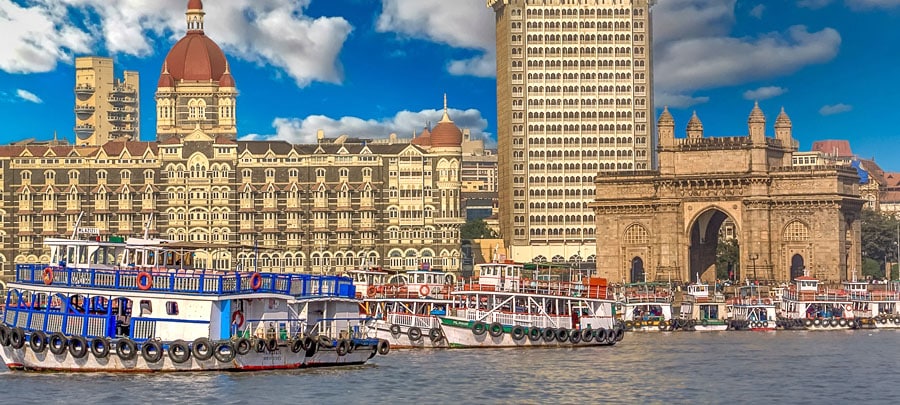

India’s wine market continues to evolve rapidly in 2025, driven by demographic shifts, changing consumer preferences, and trade agreements that are opening new doors for global exporters. The lower taxes would mean improved margins across the supply chain for Indian wine importers, distributors, retailers, and potential for diversification into a wider range of SKUs (e.g., boutique or entry-level wines).
India is a sleeping giant when it comes to the potential of its wine market; even though there are a lot of similarities with the Chinese market, China managed to overcome a number of important problems in order to kickstart imports and launch their “wine revolution”. Once it did, however, there was no producer on the planet that didn’t think at least once of starting to export to China.
In India, high taxes (150% tariffs on imported wine), cultural issues, marketing restrictions, poor distribution and storage and a multitude of other factors are still affecting the growth of the wine sector. If these obstacles are however overcome (and this might happen sooner than later), the opportunities presented for wine exporters from all over the world will be impressive.
The Indian wine market is poised for robust growth, with projections estimating a compound annual growth rate (CAGR) of 16.3% from 2025 to 2033. Factors contributing to this growth include rising disposable incomes, increased urbanization, and expanding wine tourism.
In a top 5 of imports in 2024, India’s wine importers choose wines from Australia, France, Italy, Spain and Chile.
A Young, Curious Consumer Base
Unlike the aging wine audiences in traditional Western markets, India’s wine drinkers are overwhelmingly young, with 25–44-year-olds making up the majority. Within that range, millennials aged 25–34 represent 45% of the market, while those aged 35–44 account for another 30%. These consumers are open to experimentation, eager to try new varietals and wine styles—from full-bodied reds to sparkling wines and crisp whites.
Wine has become a symbol of premium lifestyle and sophistication, particularly appealing to upper-middle-class and high-income earners. Professionals from IT, finance, and consulting sectors are typical consumers, and while men still dominate wine consumption, an increasing number of women—especially younger, urban professionals—are embracing wine, contributing to the growth in white wine and sparkling categories.
Occasions and Preferences: What’s Driving Consumption?
Wine in India is primarily enjoyed during social gatherings, celebrations, and corporate events. A growing health-conscious segment also views wine as a more refined and lighter alternative to hard liquor. Red wine remains dominant, with Shiraz and Cabernet Sauvignon leading, but the rise in white wine consumption—particularly Sauvignon Blanc and Chenin Blanc—reflects the changing palate, especially among female consumers.
Sparkling wines, including Prosecco and Champagne, are also gaining popularity, largely associated with parties and special occasions. These trends are amplified by the preferences of millennials and Gen Z, who are not only driving sales but also reshaping brand strategies through their interest in sustainability, health, and authenticity.
Australia Leads, But Europe Eyes Growth
When it comes to imports, Australia remains the dominant player, accounting for 42% of India’s imported wine as of 2022. It is followed by Italy (14%), Chile (11%), France (9%), and Spain (6%). The India-Australia Economic Cooperation and Trade Agreement (AI-ECTA), which took effect in late 2022, significantly reduced tariffs for Australian wines, further strengthening their market position.
European wines—particularly from Italy and France—have strong potential to expand their share. With India’s affluent consumers seeking premium products and the rise of wine-pairing culture in upscale restaurants, there is growing space for luxury European wines to find a home on Indian tables.
The pairing of fine wine with gourmet cuisine is catching on in high-end dining and this creates an opportunity for French and Italian wines to position themselves not just as drinks, but as lifestyle experiences.
Additionally, Indian consumers show a marked preference for fruit-forward, lighter wines in warmer weather—making Prosecco, French rosé, and white varietals well-suited for the climate and culture of social occasions in India.
Regulatory Challenges and the Road Ahead
Despite growing demand, regulatory and tariff barriers remain a significant hurdle for many European producers. Without dedicated free trade agreements, wines from France, Italy, and other EU countries face high import duties and complex taxation. Naresh emphasizes the importance of partnering with knowledgeable local distributors to navigate these challenges. He also urges European exporters to stay informed about potential future trade agreements that could provide tariff relief.
Encouragingly, 2022 saw India reignite free trade negotiations with the EU after a nine-year pause, and the deal is exptected to be concluded by the end of 2025.
In March 2025, India signed the Trade and Economic Partnership Agreement (TEPA) with the European Free Trade Association (EFTA), including Switzerland, Norway, Iceland, and Liechtenstein. These deals hint at a more open trade environment for the wine sector in the near future.
Policy Reforms Fueling Market Growth
Regulatory reforms at the state level are also playing a role in expanding wine’s reach. Some states have started to ease alcohol laws, support direct-to-consumer sales, and expand retail licenses. Notable developments include lower alcohol excise duties in Assam, and reduced excise for certain alcoholic products in Karnataka, despite intermittent increases in 2022 and again in 2024.
Looking ahead, tax reductions and liberalized sales frameworks are expected to make imported wines more affordable and accessible, helping international producers tap into India’s vast base of price-sensitive, yet aspirational consumers.
Tips for success
- As in the case of any market entry, extensive knowledge of the local situation is vital. As every Indian state has its own set of regulations and taxes, make sure that you are up to date with them and that you will understand what the pricing of your wines will be in various locations. Distribution can also be a major problem, so try to work with companies that have a lot of experience and have a well-established distribution network.
- Focus on the developed urban areas such as Delhi, Mumbai, Bangalore and the resort Goa as the vast majority of wine sales are happening here.
- Make sure that you have wines at all price ranges, as India is still a very price-sensitive market.
- Reds and fortified wines dominate the market, and most sales come in the 7-10$ range, though the 10-15$ range is gaining traction.
- More and more wine clubs are emerging in India’s urban areas, so make sure to pay attention to them too when it comes to marketing.
- Be patient and try to invest in your relationship with the importer. As most of the Indian wine importers have limited resources, you will have to get involved and help them as much as you can, starting with promotional materials, samples, and also periodic visits. A major marketing issue is the fact that regular advertisements for alcoholic drinks in mass media are not allowed so you will have to use alternative methods, such as events, tastings, sports events, festivals, etc. Social media is also a great, still largely unregulated channel.
As India’s wine landscape matures in 2025, producers and importers who understand the country’s youth-driven market, urban luxury segments, and evolving policy environment stand to gain the most. For global wine exporters—especially those in Europe—India presents both a challenge and a promising frontier for sustainable, long-term growth.
3 Wine importers from India
- Ixora
Address: D-31-32-33. Elco Arcade Bldg, Hill Road, Bandra
Phone: 00912226400390
Top suppliers: Carta Vieja, Icardi, Xenius, Lavau
Website: www.ixoravineyards.com
- Rad Elan Distributors
Address: D – 85/3, Okhla, Phase – I
Phone: 00911141000590
Top suppliers: Camas, Champagne Devaux, Chateauneuf Du Pape, Ferrari
Website: www.radelan.com/
- G Town Wines Private
Address: Faridabad – Gurgaon Road
Gurugram, Haryana, Gurgaon Division, 122022
Phone: +91 90346 36977
Top suppliers: Jacob’s Creek, Brancott, Sainte Marguerite, St Hugo
Website: https://gtownwines.com/
For a complete list of active wine importers and distributors from India, check out the BestWineImporters database.





